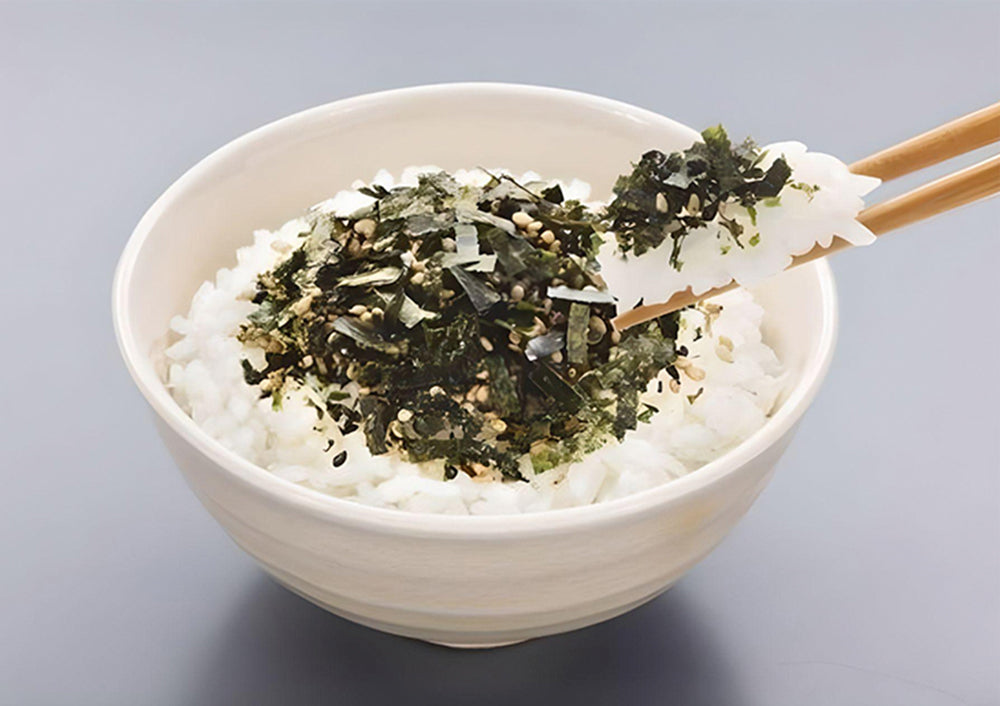7 Things You Need to Know about Furikake
If you're beginning your culinary exploration of Japanese cuisine, there's a certain condiment you'll encounter that might raise some eyebrows - furikake. A harmonious blend of sweet and savory, this traditional Japanese seasoning is a flavor powerhouse that you need to know about. Let's dive into the fascinating world of furikake.

Guide Contents:
- What is Furikake Made Of?
- What Does Furikake Taste Like?
- Is Furikake Healthy?
- What is Furikake Good For?
- What Does Furikake Mean in Japanese?
- Does Furikake Taste Fishy?
- The Role of Mishima Foods in the Furikake World
Furikake, in its most basic form, is a blend of sesame seeds, katsuobushi (dried bonito flakes), green seaweed flakes, and nori seaweed. However, the true magic of furikake lies in its versatility, with countless variations incorporating additional ingredients such as salt, sugar, or dried shiso leaves.
What Does Furikake Taste Like?
Newcomers to furikake might wonder about its flavor profile. Imagine a crunchy, salty seasoning filled with umami goodness from the bonito flakes and seaweed nori, rounded off with a nutty undertone from sesame seeds. But furikake isn't just a taste sensation - its crunchy texture also adds a delightful dimension to the dishes it graces.

You bet! Furikake is packed with calcium, making it an excellent choice for addressing calcium deficits. Plus, the seasoning provides a good source of vitamins like vitamin D, while the nori offers a beneficial dose of iodine. Furikake is also a source of protein, contributing to a balanced diet.
Traditionally, furikake is a favorite for sprinkling over steamed rice in Japan. But its applications extend far beyond that. The seasoning adds a burst of flavor to fish, vegetables, onigiri (nori-wrapped rice balls), eggs, avocado toast, poke bowls, and salads. With its umami punch and crispy texture, furikake can elevate any savory dish.
What Does Furikake Mean in Japanese?
'Furikake' translates to 'sprinkles' in Japanese, reflecting its common use. It's often sprinkled on bowls of steamed rice or incorporated into rice-based snacks like onigiri, offering an added layer of flavor, texture, and nourishment.
While furikake does typically contain dried fish and nori seaweed, its taste isn't overwhelmingly fishy. Instead, expect more of a salty, umami flavor (think miso soup rather than canned sardines). So if you're not into strong fish flavors, you might still find furikake a welcome addition to your pantry.

The Role of Mishima Foods in the Furikake World
It's hard to discuss furikake without mentioning Mishima Foods. As a top furikake company, Mishima Foods has played a substantial role in popularizing this seasoning and expanding the range of furikake flavors. By honoring tradition while embracing innovation, the company has helped introduce the delightful world of Japanese furikake to food enthusiasts globally.
Whether you're a gastronomic adventurer or simply looking for an easy way to spruce up your meals, furikake is a must-try. This quintessential Japanese seasoning, with its unique flavors, textures, and nutritional benefits, is all set to elevate your dining experience. Discover the vibrant world of furikake today.

